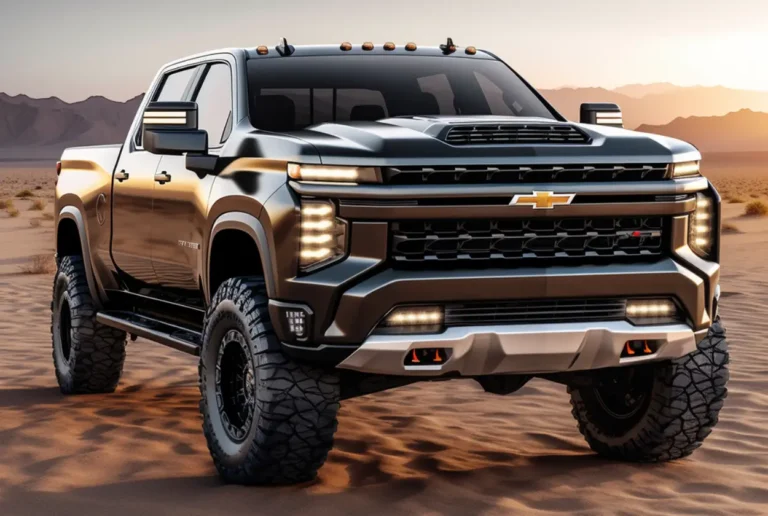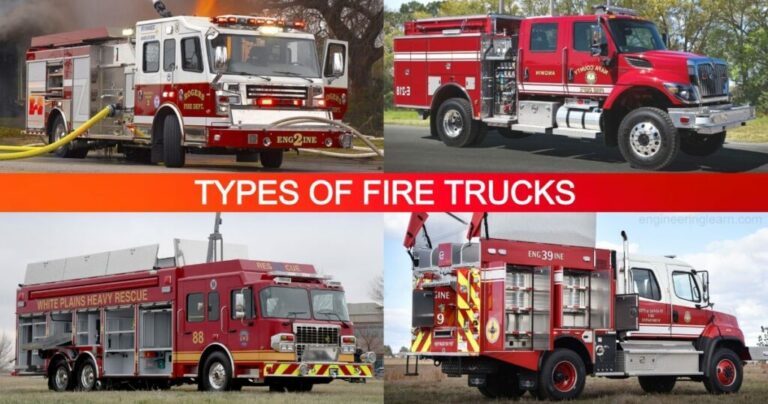Used Subaru Trucks For Sale: Unearthing the Quirky, Capable, and Collectible Utility Vehicles
Used Subaru Trucks For Sale: Unearthing the Quirky, Capable, and Collectible Utility Vehicles cars.truckstrend.com
When the phrase "Used Subaru Trucks For Sale" comes to mind, many envision a traditional full-sized pickup with a prominent Subaru badge. However, the reality is a fascinating dive into a unique segment of automotive history. Subaru, renowned globally for its symmetrical all-wheel drive, boxer engines, and practical wagons and SUVs, does not currently produce a conventional pickup truck. Instead, their legacy of "trucks" lies in a handful of distinct and highly sought-after utility vehicles: the legendary BRAT and the more modern, yet equally unconventional, Baja.
This comprehensive guide will explore what it means to look for a used Subaru "truck," delve into the models that fit this description, highlight their unique appeal, and provide practical advice for anyone considering owning one of these quirky, capable, and increasingly collectible vehicles. Far from being standard pickups, these Subarus offer a blend of car-like comfort, SUV versatility, and light-duty utility that carves out a niche all its own.
Used Subaru Trucks For Sale: Unearthing the Quirky, Capable, and Collectible Utility Vehicles
The Legacy of Subaru’s Utility Vehicles – What "Used Subaru Trucks" Really Mean
To understand "Used Subaru Trucks For Sale," one must first understand Subaru’s approach to utility vehicles. Rather than competing with traditional truck manufacturers, Subaru leveraged its unibody construction and all-wheel-drive prowess to create vehicles that offered open-bed utility without sacrificing the comfort and efficiency of a car.
1. The Subaru BRAT (Bi-drive Recreational All-terrain Transport)
- Years Produced: 1978-1994 (North America: 1978-1987)
- Description: The BRAT is arguably the most iconic "Subaru truck." Based on the Leone (Loyale/GL) platform, it was a compact, car-based coupe utility vehicle. Its most distinctive features were the two rear-facing jump seats mounted in the bed, which allowed it to be classified as a passenger car (avoiding the "chicken tax" on imported light trucks). Powered by a flat-four boxer engine, it offered selectable 4WD (later models had push-button 4WD).
- Appeal: Its rugged simplicity, excellent ground clearance for its size, and unmistakable retro charm make it a cult classic. Brats are increasingly rare, especially in good, rust-free condition, and command collector interest.

2. The Subaru Baja
- Years Produced: 2003-2006
- Description: A spiritual successor to the BRAT, the Baja was based on the Outback/Legacy platform, essentially a four-door crew-cab pickup with a short, integrated bed. It featured Subaru’s signature symmetrical AWD, a unibody construction, and a more refined, car-like interior than traditional trucks. It was available with a 2.5L naturally aspirated boxer engine or a 2.5L turbocharged engine (shared with the WRX and Forester XT). A unique "pass-through" system allowed longer items to extend from the bed into the rear passenger compartment.
- Appeal: The Baja offered modern Subaru reliability and safety features combined with light utility. Its distinctive styling makes it stand out, and its AWD capability provides versatility in various driving conditions. Like the BRAT, its limited production run has made it a niche favorite.
While other Subaru models like the Forester or Outback, when equipped with a hitch, can pull small trailers and offer significant cargo space, the BRAT and Baja are the only true "trucks" (or "sport utility trucks") ever offered by Subaru in North America with an open bed integrated into the body.
Why Choose a Used Subaru "Truck" (Brat or Baja)?
The decision to purchase a BRAT or Baja isn’t typically driven by the need for heavy-duty hauling. Instead, their appeal lies in a unique blend of characteristics:
- Subaru Reliability & Longevity: Both models inherit Subaru’s reputation for robust, long-lasting powertrains, especially the boxer engines and symmetrical AWD systems. With proper maintenance, these vehicles can rack up impressive mileage.
- Symmetrical All-Wheel Drive (AWD): This is Subaru’s hallmark. Whether you’re navigating snowy roads, muddy trails, or just wet pavement, the constant AWD system provides superior traction and confidence that traditional 2WD vehicles cannot match.
- Unique Style & Quirky Charm: In a world of cookie-cutter vehicles, the BRAT and Baja stand out. Their distinctive designs turn heads and often spark conversations. The BRAT, in particular, has a strong nostalgic appeal.
- Fuel Efficiency (Relative): Compared to full-sized pickup trucks, both the BRAT and Baja offer significantly better fuel economy, making them more practical for daily driving.
- Versatility: While their beds are smaller than conventional pickups, they are incredibly useful for hauling smaller items, gardening supplies, bikes, or camping gear. The Baja’s pass-through feature further enhances its utility for longer items.
- Car-Like Driving Dynamics: Because they are unibody and based on passenger car platforms, the BRAT and Baja offer a much smoother, more comfortable, and more agile ride than body-on-frame trucks.
- Strong Community Support: Subaru enthusiasts are passionate. Owners of BRATs and Bajas benefit from a vibrant online community that shares knowledge, parts sources, and technical advice, making ownership more manageable.
Key Considerations When Buying a Used Subaru "Truck"
Purchasing a BRAT or Baja requires a different mindset than buying a common used car. Due to their age and rarity, specific factors become paramount:
- Availability & Rarity: Both models were produced in limited numbers and for relatively short periods. Finding one, especially a well-maintained example, can be a challenge and may require patience. The BRAT is significantly rarer than the Baja.
- Condition & Rust:
- BRAT: Being an older vehicle (many are 30-40+ years old), rust is a major concern. Inspect the frame, rocker panels, wheel wells, bed, and even the "chicken perches" (jump seats) thoroughly. Many have lived hard lives.
- Baja: While newer, Bajas can still show rust, particularly in salt-belt states. Check the rear subframe, exhaust, and lower body panels.
- Maintenance History: A comprehensive service history is crucial. Look for evidence of regular oil changes, timing belt replacements (a critical service interval for Subaru boxer engines), and head gasket service (a common issue on earlier EJ series engines, though improved on later Baja models).
- Parts Availability: While many mechanical components (engine, transmission, suspension) are shared with other Subaru models (Legacy, Outback, Impreza), specific body panels, interior trim pieces, or unique BRAT/Baja-specific parts can be exceedingly difficult and expensive to source. Aftermarket support is limited for unique parts.
- Bed Size & Payload Limitations: Be realistic about what these vehicles can haul. The BRAT’s bed is tiny, and the Baja’s is short. They are not designed for heavy loads or large construction materials. Check the specific payload capacity if you have particular needs.
- Price vs. Value: The value of a BRAT is heavily influenced by its condition and originality, often appealing to collectors. Bajas hold their value well due to their rarity and unique appeal. Don’t expect bargain-basement prices for well-kept examples.
Where to Find and How to Inspect Your Used Subaru "Truck"
Finding your ideal used Subaru "truck" can be an adventure in itself. Once found, a meticulous inspection is essential.
Where to Find:
- Online Marketplaces: Craigslist, Facebook Marketplace, and local classifieds are common hunting grounds. Set up alerts for "Subaru BRAT" or "Subaru Baja."
- Subaru Forums & Enthusiast Groups: Dedicated Subaru owner forums, Facebook groups (especially for BRATs and Bajas), and online communities are excellent places to find vehicles for sale by passionate owners.
- Specialty Used Car Dealers/Collectors: Some dealers specializing in unique or classic cars might occasionally have a BRAT. Bajas are more likely to appear at general used car dealerships, but still infrequently.
- Classic Car Auction Sites: For high-condition BRATs, sites like Bring a Trailer or eBay Motors can be good sources, though prices will be premium.
- Word-of-Mouth: Let friends, mechanics, and local car enthusiasts know you’re looking.
How to Inspect:
- Pre-Purchase Inspection (PPI): This is non-negotiable. Have a trusted mechanic, preferably one familiar with Subarus, perform a thorough inspection before you commit to buying.
- Exterior:
- Rust: Crucial for both models, especially the BRAT. Check rocker panels, wheel wells, door bottoms, bed seams, frame rails, and suspension mounting points.
- Body Panels: Look for dents, dings, mismatched paint (indicating accident repair), and proper panel alignment.
- Tires: Check tread depth, uneven wear (sign of alignment issues or suspension problems), and tire age.
- Interior:
- Wear and Tear: Check seats, carpets, headliner for rips, stains, and excessive wear.
- Electronics: Test all lights, wipers, power windows, mirrors, radio, and HVAC system.
- Dashboard: Look for warning lights (Check Engine, ABS, Airbag).
- Engine Bay:
- Leaks: Check for oil, coolant, or power steering fluid leaks. Pay close attention around the head gaskets (top and bottom of the engine where the block meets the heads).
- Belts & Hoses: Check for cracks, fraying, or bulging.
- Fluid Levels & Condition: Check oil, coolant, brake fluid, power steering fluid, and transmission fluid.
- Battery: Check terminals for corrosion.
- General Cleanliness: A very dirty engine bay might suggest neglect, while an overly clean one might hide issues.
- Undercarriage:
- Rust: Again, critical. Look at the exhaust system, suspension components, brake lines, and fuel lines.
- CV Axle Boots: Check for tears, which lead to grease leaks and eventual joint failure.
- Suspension: Look for worn bushings, leaky shocks/struts, or bent components.
- Test Drive:
- Engine: Listen for unusual noises (knocking, ticking, grinding). Check for smooth acceleration and no hesitation.
- Transmission: Check for smooth shifts (manual or automatic), no slipping or harsh engagements.
- Brakes: Ensure firm pedal feel, no pulling, grinding, or squealing.
- Steering: Should be precise, no excessive play, no pulling to one side.
- AWD System: Test in various conditions if possible, or engage 4WD on BRAT.
- Listen for Noises: Pay attention to any clunks, squeaks, or hums from the suspension, wheels, or drivetrain.
Owning and Maintaining Your Subaru "Truck"
Once you’ve found and purchased your Subaru "truck," responsible ownership involves regular maintenance and awareness of common issues.
- Regular Maintenance: Adhere to the manufacturer’s recommended maintenance schedule, especially for oil changes, fluid checks, tire rotations, and filter replacements.
- Timing Belt (EJ Engines): This is a critical service item for both models (if equipped with an EJ engine, which most are). Neglecting it can lead to catastrophic engine damage. Ensure it has been replaced at the recommended intervals (typically every 105,000 miles or 7-10 years).
- Head Gaskets: While improvements were made, the EJ25 engine (found in the Baja and some later BRATs) is known for head gasket issues. Watch for external oil/coolant leaks or internal signs like coolant consumption or milky oil. Addressing this proactively can save you major headaches.
- Rust Prevention: For the BRAT especially, regular cleaning and rustproofing can extend its life. Address any small rust spots immediately.
- Parts Sourcing: Join online forums and groups. Many members can point you to specific part suppliers, whether new old stock (NOS), aftermarket, or good used parts.
- Understand Limitations: Remember these are not heavy-duty workhorses. Treat them well, respect their payload and towing capacities, and they will serve you faithfully for light utility and enjoyable driving.
Estimated Price Ranges for Used Subaru Utility Vehicles
Prices for these unique vehicles vary wildly based on condition, mileage, originality, and regional demand. The following table provides a general estimate:
| Model | Years Produced (NA) | Condition: Poor/Fair (Needs Work) | Condition: Good (Driver Quality) | Condition: Excellent/Collector | Notes/Key Factors |
|---|---|---|---|---|---|
| Subaru BRAT | 1978-1987 | $2,000 – $6,000 | $7,000 – $15,000 | $16,000 – $30,000+ | Rust is the primary determinant. Originality & jump seats add value. |
| Subaru Baja | 2003-2006 | $4,000 – $8,000 | $9,000 – $16,000 | $17,000 – $25,000+ | Turbo models (manual) command higher prices. Mileage & maintenance history are key. |
Note: These are estimated ranges. Actual prices can fluctuate significantly based on market demand, specific features (e.g., turbo engine, manual transmission, specific trim levels), and geographical location.
Frequently Asked Questions (FAQ) about Used Subaru Trucks For Sale
Q1: Does Subaru still make pickup trucks?
A1: No, Subaru does not currently produce a conventional pickup truck. Their last true "truck" model was the Baja, discontinued in 2006.
Q2: What is the difference between a Subaru BRAT and a Subaru Baja?
A2: The BRAT (1978-1987) is an older, smaller, 2-door coupe utility based on the Leone/Loyale, known for its rear-facing jump seats. The Baja (2003-2006) is a more modern, larger 4-door crew-cab utility vehicle based on the Outback/Legacy, featuring a short bed and a unique pass-through system.
Q3: Are used Subaru trucks reliable?
A3: Generally, yes. Both the BRAT and Baja inherit Subaru’s reputation for mechanical reliability, especially their symmetrical AWD systems and boxer engines. However, like any older vehicle, their reliability depends heavily on previous maintenance and current condition. Head gasket issues can be a concern on some EJ series engines.
Q4: Can I really haul things with a Baja or BRAT?
A4: Yes, but with limitations. Their beds are much smaller than traditional pickups. They are best suited for light-duty hauling like gardening supplies, camping gear, bikes, or smaller furniture. They are not designed for heavy construction materials or large loads. Always check the specific model’s payload capacity.
Q5: Where can I find parts for these old Subaru trucks?
A5: Many mechanical parts (engine, transmission, suspension components) are shared with other Subaru models from their respective eras (e.g., Legacy, Impreza, Forester, Loyale), making them relatively accessible. However, unique body panels, interior trim, or specific BRAT/Baja parts can be challenging to find and may require searching through specialized Subaru recyclers, online enthusiast forums, or aftermarket fabricators.
Q6: Are they good for off-roading?
A6: For light to moderate off-roading, yes. Both models benefit greatly from Subaru’s symmetrical AWD, offering excellent traction on unpaved roads, snow, and light trails. Their unibody construction means they’re not as robust for extreme rock crawling or heavy abuse as body-on-frame trucks, but they are surprisingly capable for their size.
Q7: What kind of mileage can I expect from a used Subaru truck?
A7: Well-maintained examples of both the BRAT and Baja can easily exceed 200,000 miles. Many owners report 250,000+ miles on their engines and drivetrains. The key is consistent maintenance and addressing issues promptly.
Conclusion
The world of "Used Subaru Trucks For Sale" is a distinctive niche, dominated by the endearing BRAT and the versatile Baja. These aren’t your typical workhorses, but rather unique utility vehicles that offer a compelling blend of Subaru’s renowned symmetrical all-wheel drive, dependable reliability, and undeniable character.
For those seeking a vehicle that stands out, offers practical light-duty utility, and provides a fun, car-like driving experience in all weather conditions, a used Subaru BRAT or Baja could be an excellent choice. While finding a well-maintained example requires patience and a thorough inspection, the reward is ownership of a quirky, capable, and increasingly cherished piece of Subaru history. Embrace their individuality, understand their limitations, and you’ll find these "trucks" to be surprisingly enjoyable and enduring companions on your adventures.




